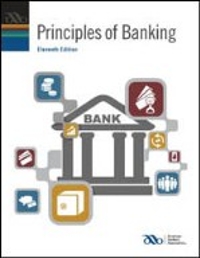Question
1.Which of the following statements is FALSE? Group of answer choices a.If a stock is correctly priced, the expected holding period return for buying the
1.Which of the following statements is FALSE?
Group of answer choices
a.If a stock is correctly priced, the expected holding period return for buying the stock at the current market price equals the expected return of other investments available in the market with equivalent risk.
b.If the current stock price were less than the intrinsic value, buying the stock would be a positive NPV investment, and we would expect investors to rush in and buy it, driving up the stock's price.
c.An investor will be willing to pay up to the point at which the current price of a share of stock equals the present value of the expected future dividends and the expected future sale price.
d.If the current stock price were greater than the intrinsic value, buying the stock would be a positive NPV investment, and we would expect investors to rush in and buy it, driving up the stock's price.
2.When you take a short position in an asset, you (pay / receive)_________ the price today and you (pay / receive) ___________ the future cash flows.
When you take a long position in an asset, you (pay / receive) __________ the price today and you (pay / receive) ____________ the future cash flows.
3.One approach to valuing an asset is to forecast the expected future cash flows up to some horizon (eg 5 years), and to estimate the___________ at the horizon assuming the cash flows will grow at a constant rate beyond the horizon.
4-Select the correct statement(s):
Group of answer choices
a.The bid price is the price at which you can buy the asset from the dealer.
b.The bid price is the price at which you can sell the asset to the dealer.
c.The ask price is higher than the bid price.
d.The ask price is the price at which you can sell the asset to the dealer.
e.The ask price is the price at which you can buy the asset from the dealer.
5-Select the correct statement(s):
Group of answer choices
a.The Gordon model is used to value stocks of mature, stable-growth companies, such as utilities.
b.We cannot use the Gordon model to value the stock of a firm with rapid or changing growth.
c.If a stock is priced according to the Gordon model, its expected HPR is equal to the expected dividend yield plus the expected capital gain rate.
d.If a stock is priced according to the Gordon model, its expected HPR is equal to the expected dividend yield plus the expected dividend growth rate.
Use the following information to answer questions 6, 7 and 8. A stock currently trades for $30 share and is expected to pay a dividend of $1.20 in one year. Its expected price right after paying that dividend is $33.
6-The expected dividend yield is closest to:
Group of answer choices
a.4.20%
b.3.60%
c.3.40%
d.4.00%
7.The expected capital gain rate is closest to:
Group of answer choices
a.6.0%
b.4.0%
c.14.0%
d.10.0%
8-Assuming the stock is correctly priced, the cost of capital is closest to:
Group of answer choices
a.6.0%
b.14.0%
c.10.0%
d.4.0%
9-Suppose the S&P500 index is priced according to the Gordon model. The total cash payout next year is expected to be 4.3% of the current market value of the index. The total cash payout is then expected to grow at 1.5% forever. The expected return on the S&P500 implied by the Gordon model is closest to:
Group of answer choices
a.1.5%
b.9.71%
c.5.8%
d.4.3%
10-What is one limitation of the Gordon model? (One sentence.)
Step by Step Solution
There are 3 Steps involved in it
Step: 1

Get Instant Access to Expert-Tailored Solutions
See step-by-step solutions with expert insights and AI powered tools for academic success
Step: 2

Step: 3

Ace Your Homework with AI
Get the answers you need in no time with our AI-driven, step-by-step assistance
Get Started


